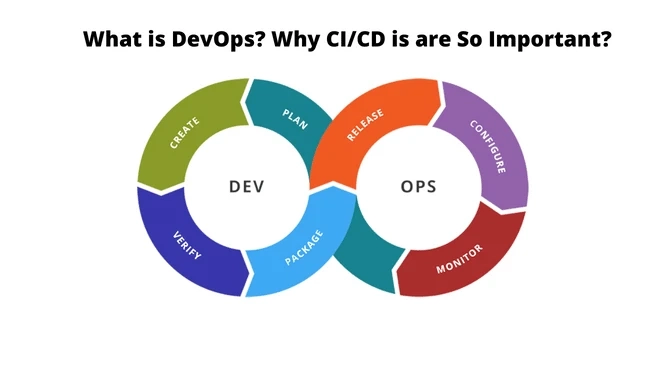Introduction to DevOps:
DevOps is a term used to describe the process of facilitating collaboration between system administrators and developers in order to improve software development efficiency. In a DevOps environment, both system administrators and developers are typically working with the same tools and processes, which helps to speed up the development process. The DevOps Training in Hyderabad course headed by the expert trainers at the Kelly Technologies can help you develop skills needed to excel in your professional career.
Why is CI/CD important?
CI/CD pipelines help DevOps teams automate repetitive tasks, such as building and testing code changes, so they can focus on more important work. By automating the software delivery process, businesses can reduce errors and improve software quality. Additionally, CI/CD pipelines help DevOps teams avoid downtime by allowing them to quickly roll back changes that cause problems.
Overall, CI/CD pipelines help businesses move faster and deliver better quality software. For these reasons, CI/CD has become an essential part of the DevOps toolkit.
CI/CD Tools
DevOps is a term for a set of practices that combines software development (Dev) and IT operations (Ops). The goal of DevOps is to shorten the development cycle and provide faster delivery of features.
There are many tools available to help with CI/CD processes. Some of the most popular include Jenkins, Bamboo, and GoCD. Each tool has its own strengths and weaknesses, so it\'s important to choose the right one for your needs.
Jenkins is a popular open-source tool that can be used for both CI and CD. It has a large community of users and developers who contribute plugins to extend its functionality. Bamboo is a commercial tool from Atlassian that offers many features out-of-the-box, making it easy to get started with CI/CD.
What is a CI/CD pipeline?
A continuous integration/continuous delivery (CI/CD) pipeline is a DevOps tool that enables software developers to automatically build, test and deploy code changes. This enables them to rapidly and reliably deliver new features and updates to users.
A CI/CD pipeline typically consists of the following stages:
- Continuous integration: Code changes are automatically built and tested each time they are committed to the codebase. This helps to catch errors early and prevent them from being deployed to production.
- Continuous delivery: Once the code has been successfully built and tested, it is automatically deployed to a staging or production environment. This enables rapid delivery of new features and updates to users.
- Continuous deployment: In some cases, code changes may be deployed directly to production without going through a staging environment first.
Supercharge your DevOps team with CI/CD
If your DevOps team is looking for a way to supercharge their efficiency and output, they should consider implementing CI/CD best practices. Continuous integration (CI) and continuous delivery (CD) are two key components of DevOps that can help teams streamline their workflows and increase velocity.
When teams practice CI, they integrate code changes into a shared repository frequently, typically multiple times per day. This allows for early detection and resolution of conflicts, as well as quicker feedback cycles. CD takes this one step further by automating the build, test, and deployment process so that code changes can be released to production quickly and easily.
Implementing CI/CD can help your DevOps team work more efficiently and effectively, leading to increased velocity and improved quality.
What is the difference between DevOps and CI CD?
There are a few key differences between DevOps and CI/CD. For one, DevOps is more focused on the culture and collaboration between developers and operations teams, while CI/CD is more of a set of tools and processes for automating the software delivery lifecycle. Another key difference is that in DevOps, there is a emphasis on continuous feedback and learning in order to improve the quality of the software, while in CI/CD there is more of an emphasis on automating the process so that it can be done faster and with less errors.
Ultimately, both DevOps and CI/CD aim to improve the efficiency and quality of software delivery. However, they take different approaches to achieve this goal. DevOps focuses on culture and collaboration while CI/CD focuses on automating processes.
Conclusion:
DevOps is a set of tools, processes, and practices that enables organizations to deliver value to their customers quickly and efficiently. It is a response to the challenges of the digital age, where businesses must be able to rapidly adapt to change in order to survive. DevOps has helped many organizations become more agile and efficient, but it is not without its challenges. One of the biggest challenges is culture change. DevOps requires a shift in thinking from siloed departments working in isolation to a more collaborative way of working. This can be difficult for some organizations to achieve. Despite the challenges, DevOps has proven itself to be a valuable tool for business success in the digital age. Organizations that embrace DevOps are able to deliver value to their customers faster and more efficiently than those who don\'t.



